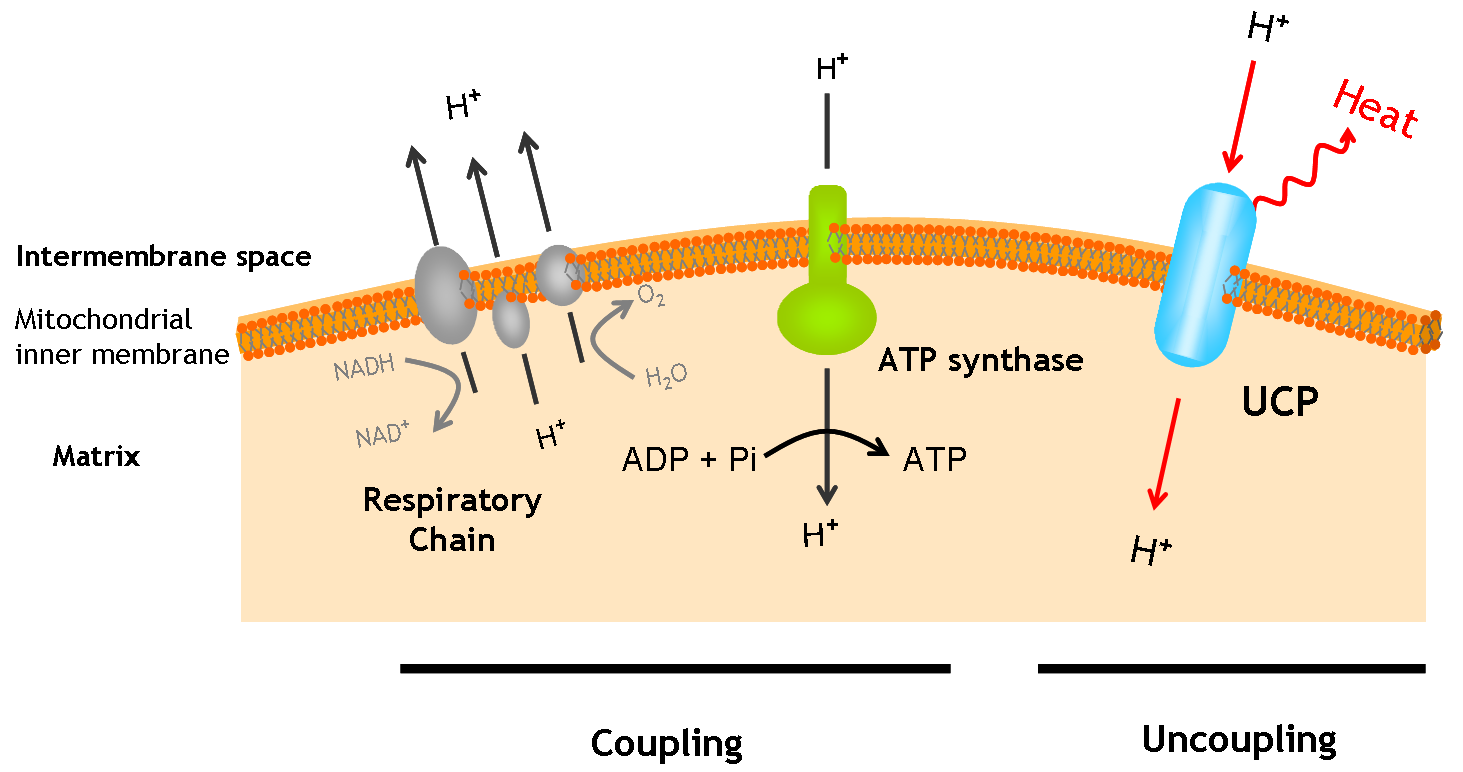Team:Valencia/Project
From 2008.igem.org
(→Applications) |
|||
| Line 18: | Line 18: | ||
| - | == How thermogenin | + | == How does thermogenin work? == |
<br> | <br> | ||
UCP1, also known as thermogenin, is an uncoupling protein found in the mitochondria of brown adipose tissue. This protein plays an important role in hibernating mammals and in human infants since it is able to generate heat. UCP1 provides an alternative pathway by which protons can reenter the mitochondrial matrix from the intermembrane space, instead of going through ATP synthase. The result is a temperature increase rather than ATP production in the tissue containing this protein family. | UCP1, also known as thermogenin, is an uncoupling protein found in the mitochondria of brown adipose tissue. This protein plays an important role in hibernating mammals and in human infants since it is able to generate heat. UCP1 provides an alternative pathway by which protons can reenter the mitochondrial matrix from the intermembrane space, instead of going through ATP synthase. The result is a temperature increase rather than ATP production in the tissue containing this protein family. | ||
Revision as of 11:30, 29 October 2008
Heat is vital for life. Many living forms are unable to maintain its temperature in an adequate range; while others keep it constant using several biochemical mechanisms. We thought it would be really interesting to implement some of these biological tools in an organism that we could easily control.
Using yeast as our model, we aim to be able to express a common mammal protein, thermogenin, to produce heat. This process would be really useful in many industrial applications and even daily routine actions. Thermogenin is a mitochondrial membrane protein that dissipates proton gradient in heat.
We are using Saccharomyces cerevisiae strains kindly handed over by [http://www.cib.csic.es/en/grupo.php?idgrupo=39 Dr. Eduardo Rial]. Besides, we have built our own calorimeters so as to record temperature differences.
In a later stage, we expect to control these temperature differences to optimize the possible applications. Consequently, we will implement a regulatory system for the thermogenin gene expression.
Watch out for news from our project!
How does thermogenin work?
UCP1, also known as thermogenin, is an uncoupling protein found in the mitochondria of brown adipose tissue. This protein plays an important role in hibernating mammals and in human infants since it is able to generate heat. UCP1 provides an alternative pathway by which protons can reenter the mitochondrial matrix from the intermembrane space, instead of going through ATP synthase. The result is a temperature increase rather than ATP production in the tissue containing this protein family.
[http://www.cib.csic.es/en/grupo.php?idgrupo=39 More information]
Applications
Maybe some of you are wondering:
What a yeast strain able to control its internal temperature could be useful for?
First, we just thought this idea would be interesting as a theoretical project. Nevertheless, when our group was running a brainstorming to see how to carry out the project and which could be the possible fields of application for this kind of processes, we found out that:
- One could have a living cell which maintains its temperature between certain levels without the need of introducing external heat to the system. Considering that enzymatic activity usually has a strong dependence on the temperature, this system would allow the reduction of electricity costs in an specific reaction.
- One could combine a heat-producing system such as the hot yeast strains we report here with other microbial cultures in order to heat them up. Since nutrients are converted into heat through uncoupling proteins, electricity-based heat production is saved.
- One could even implement this system in some plants species. If a plant could control its temperature it would be able to grow in colder climates or to survive frosts.
 "
"
